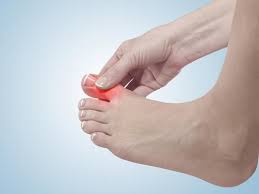Bunions are a common condition where a bony bump forms at the base of the big toe. They can cause discomfort, swelling, and difficulty wearing certain types of footwear. While medical intervention may be required in severe cases, incorporating specific daily habits into your routine can help reduce discomfort and improve foot health. Here are tips for daily habits to manage bunions:
Choosing Appropriate Footwear
Selecting the right footwear is key for managing bunion discomfort and preventing the condition from worsening. Shoes with a wide toe box are paramount, allowing the toes to spread naturally, reducing pressure on the bunion. Avoid footwear with pointed toes, high heels, or stiff materials. These shoes can exacerbate discomfort and contribute to further joint misalignment. Supportive shoes with cushioned insoles can help absorb shock and minimize stress on the affected area. Opt for orthopedic or custom-fit shoes designed specifically for individuals with bunions to achieve optimal support and flexibility.
Incorporating Foot Exercises
Regular foot exercises strengthen the muscles around the big toe joint, improve flexibility, and maintain proper alignment. Toe stretches, for instance, can help relieve tension by gently pulling the big toe into a straighter position. Toe circles can also improve joint mobility. Exercises work to strengthen the smaller muscles within the foot, promoting overall balance and stability. These exercises should be performed consistently and incorporated into a broader foot care routine for optimal results. Consulting a physical therapist or podiatrist can help tailor an exercise program specific to an individual’s needs. This promotes the best possible outcomes for bunion relief and prevention.
Applying Ice for Pain Relief
Applying ice to the affected area effectively reduces inflammation and alleviates pain associated with bunions. Applying an ice pack for 15 to 20 minutes at a time, several times a day, can provide significant relief. It is key to wrap the ice pack in a thin cloth or towel to prevent direct contact with the skin, which could lead to cold burns or irritation. This simple intervention can be especially useful after prolonged periods of standing or walking, as it helps to mitigate swelling and discomfort.
Maintaining a Healthy Weight
Excess body weight places extra stress on the joints of the feet, which can exacerbate pain and inflammation associated with bunions. Regular physical activity, such as low-impact exercises, can aid in weight management while reducing foot strain. A balanced diet rich in nutrients such as calcium and vitamin D can support overall bone health, potentially reducing the risk of further joint deformity. For individuals already experiencing discomfort from bunions, consulting a healthcare professional or nutritionist may provide tailored advice for achieving and maintaining an optimal weight while minimizing strain on the feet.
Explore Treatment Options for Bunions
Addressing bunion discomfort requires a combination of preventive measures, daily care routines, and, when necessary, professional medical intervention. By incorporating foot exercises and choosing proper footwear, individuals can manage the discomfort of bunions. Book a consultation with a podiatrist or healthcare professional to get more insights and access to a broader range of treatments.



